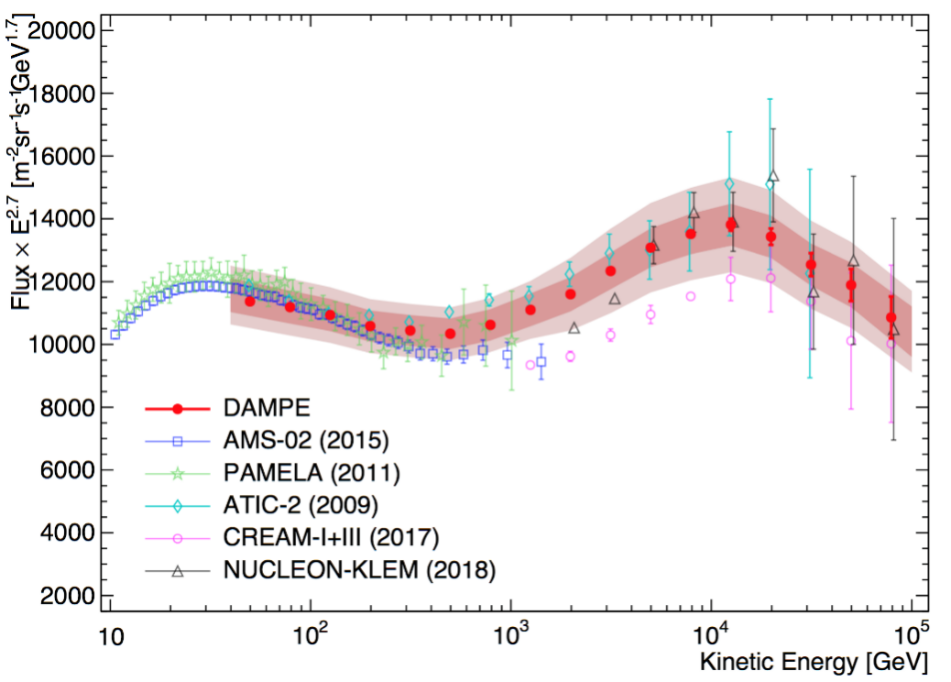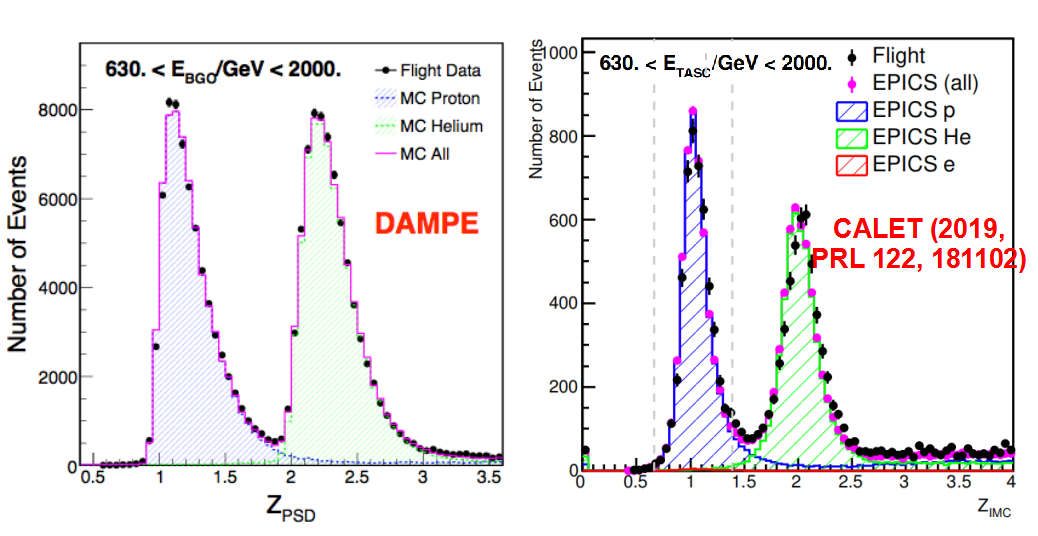DAMPE Achieves High-Precision and High-Energy Cosmic Ray Proton Spectrum Measurement
The Dark Matter Particle Explorer (DAMPE, also known as "Wukong") collaboration recently reported the precise measurement of the energy spectrum of cosmic ray protons from 40 GeV to 100 TeV energies. This was the first time that an experiment directly measures the cosmic ray protons up to the energy of 100 TeV with high precision. Scientists from the Institute of Modern Physics (IMP) played a vital role in the measurement. The results were published in Science Advances.
Protons,the nuclei of hydrogen atoms, are the most abundant component of cosmic rays. Precise measurements of the proton energy spectrum are the key to understanding some fundamental questions of cosmic ray physics. Due to the block of the atmosphere, the direct measurement of cosmic rays needs to be done in space, via high-altitude balloon-borne experiments or satellites. For a long time the data quality of such measurements has been limited by either low statistics or a narrow energy-band coverage.
DAMPE is a space satellite dedicated to high-energy cosmic ray and gamma-ray observations. Besides probing the nature of dark matter particles, one of the main scientific goals of DAMPE is to precisely measure the energy spectra of cosmic ray particles. With excellent energy resolution (for electrons and gamma-rays), very good particle identification capability and reasonably large acceptance, DAMPE is very suitable for the studies of precise spectral structures of cosmic rays.
The maximum energy achieved by DAMPE is nearly 50 times higher than Alpha Magnetic Spectrometer (AMS), and 10 times higher than Calorimetric Electron Telescope (CALET). The result confirms the "hardening" feature around hundreds of GeV energies revealed previously. Most importantly, DAMPE discovered a "softening" (drop behavior) of the spectrum at around 14 TeV energy. This softening is likely an imprint of a nearby cosmic ray source, e.g., a supernova remnant. The break energy is expected to be the acceleration limit of such a source. The DAMPE result thus provides important data to understand the origin and acceleration of cosmic rays.
IMP is responsible for developing a sub-detector of DAMPE, namely the Plastic Scintillator Detector (PSD). After launching DAMPE satellite, PSD group has performed the in-orbit calibration of PSD and participated in the scientific analysis. The refined calibration job of PSD illustrates that PSD can identify different nuclei species in cosmic rays with good resolution. The charge resolution can reach a high level of 0.059@Z=1 and 0.3@Z=26, which plays a vital role in the measurement of the 40 GeV-100 TeV energy spectrum of cosmic ray protons.
Link to the paper: https://advances.sciencemag.org/content/5/9/eaax3793
Fig 1. Charge spectral of proton and helium measured by DAMPE (Left) and CALET (Right). (Image by DAMPE collaboration)

Fig 2. The 40 GeV-100 TeV energy spectrum of cosmic ray protons measured by DAMPE (red dots). (Image by DAMPE collaboration)
Contact :
LIU Fang
Institute of Modern Physics
Email: fangliu@impcas.ac.cn
Reference
A new study sheds light on nuclear reaction production mechanisms of 94Tc nucleus
Scientists from the Institute of Modern Physics (IMP) of the Chinese Academy of Sciences, University of Surrey of UK, and Universidade Federal Fluminense of Brazil have lately made new progress in the study of the production of 94Tc nucleus. The study extends information on the reaction mechanisms and production of 94Tc, a biologically important nucleus.




 甘公网安备 62010202000713号
甘公网安备 62010202000713号


